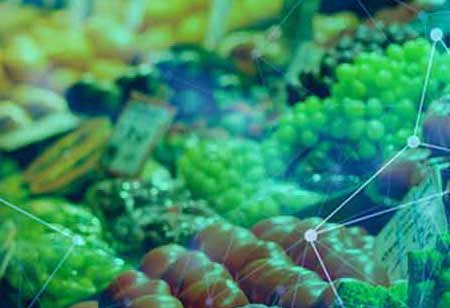THANK YOU FOR SUBSCRIBING
Be first to read the latest tech news, Industry Leader's Insights, and CIO interviews of medium and large enterprises exclusively from Food and Beverage Tech Review
Food and Beverage Marketing Developments to Monitor in Coming Years
Marketing is essential to the success of all businesses, from small-scale food and beverage producers to multinational corporations. Food and beverage marketing can take various forms, including establishing relationships with prospective customers,

By
Food and Beverages Tech Review | Monday, October 31, 2022
Stay ahead of the industry with exclusive feature stories on the top companies, expert insights and the latest news delivered straight to your inbox. Subscribe today.
Marketing food and beverages helps businesses and consumers build and maintain markets by generating confidence and loyalty.
FREMONT, CA: Marketing is essential to the success of all businesses, from small-scale food and beverage producers to multinational corporations. Food and beverage marketing can take various forms, including establishing relationships with prospective customers, increasing brand awareness, launching new goods, and promoting them through advertising campaigns, all to increase sales.
Therefore, a straightforward definition of food and beverage marketing emphasizes the client. A food and beverage marketing strategy that emphasizes outstanding guest relations is significant to the success of a hospitality organization.
Food and beverage marketing is essential for establishing and sustaining markets by fostering consumer confidence and loyalty. This depends on various elements, particularly those associated with the food products and services industries.
The marketing sector is crucial in promoting an organization's sales and mission. It represents the company by coordinating and creating all materials bearing its name. It is the responsibility of marketing to reach out to prospects, customers, investors, and the community while building an image that positively portrays the firm.
Being a food and beverage brand is both advantageous and disadvantageous. The boon? Everyone must eat and drink; thus, demand will always remain. In 2026, food and beverage retail sales will reach $1.37 trillion, up from $1.23 trillion in 2022.
The bane? It may very well be a four-course meal:
There have been shortages of the food product.
Price increases are a result of inflation.
There is an incredible variety of items on the market nowadays.
Modern customers' taste senses continue to adapt.
Food and beverage marketers must keep up with the latest trends in marketing to remain relevant. Here are some trends to consider as food marketers develop their food and beverage brand's advertising strategies:
CONSUMERS COOKING AT HOME
According to the Institute of Food Technologists, the newest generation and millennial consumers are returning to the kitchen due to inflation. Six out of ten people aged 25-34 cook dinners at home more than they did a year ago, and they prefer simple, inexpensive meals that are healthy, occasionally plant-based, and sometimes saucy and spicy. Each of these may be a fully baked trend in its own right, but the most important point is that increasing food prices and restaurant staffing shortages have made cooking at home more appealing. Searches for "air fryers" have stayed above pre-pandemic levels, and "meal kits" and related terms continue to gain popularity.
Food marketers can gain revenue by demonstrating how simple and affordable their products are to cook and how appetizing the plated product looks.
DIGITAL AND ELECTRONIC COMMERCE
E-commerce will comprise more than 10 percent of grocery sales in 2023, boosting Instacart's reputation and Walmart's digital revenue, while "click-and-collect" grocery sales will increase progressively as a percentage of e-commerce grocery sales. And intermediate delivery services will rise over the next five years for those who prefer not to cook.
A meal kit can also fall into this category, and though users canceled their subscriptions after the pandemic, the market forecast predicts that the meal kit industry will grow from $6.9 billion in 2021 to over $10 billion in 2024, with one service collaborating with dietitians to develop meal plans for diabetics and chronic kidney disease patients.
Investing in digital presence can help brands stand out in this increasingly competitive field or at least keep up. Programmatic advertising's adaptability and agility may assist food marketers in navigating the unpredictability of today's market. It can place the most valuable messages in front of the most valuable clients in their genuine time of need. With consumers spending a growing amount of their food and beverage budget on digital channels and the fragmented and complex nature of the digital space, brands can also benefit from investing in digital advertising automation tools to streamline processes, keep up with the industry's ad spend trajectory, and navigate the volatile market today.
I agree We use cookies on this website to enhance your user experience. By clicking any link on this page you are giving your consent for us to set cookies. More info







